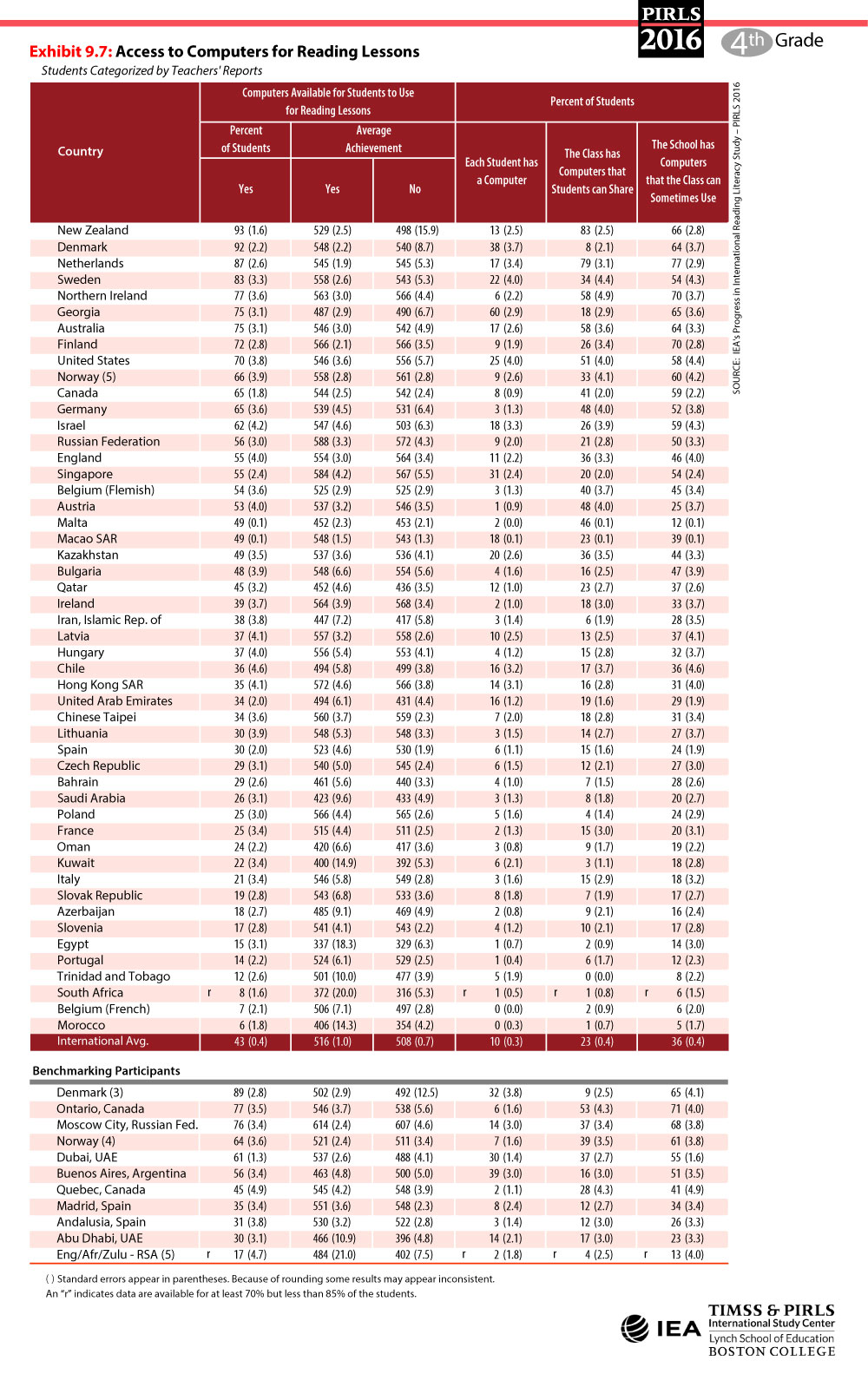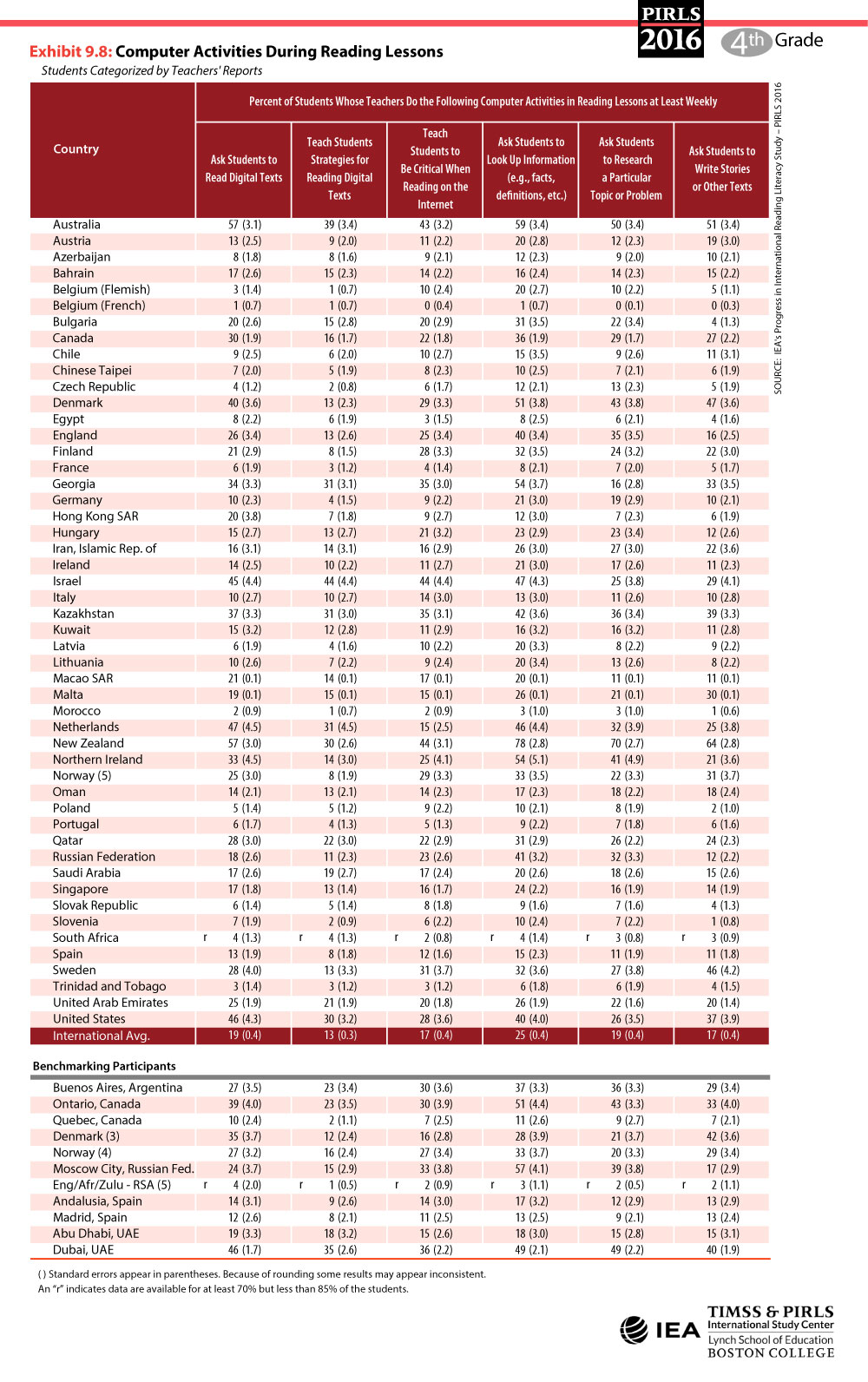Exhibit 9.7 provides information about students’ access to computers as part of their reading lessons, and Exhibit 9.8 contains teachers’ reports about the prevalence and types of computer-based activities used as part of reading instruction.
There was wide variation across the PIRLS countries in computer availability for use in reading lessons, from availability for most students (92-93%) in New Zealand and Denmark to availability for only a few students (6-8%) in South Africa, Belgium (French), and Morocco. Internationally, the fourth grade students with computers available for reading instruction had higher achievement (516 vs. 508), which also is likely to be related to socioeconomic factors. On average, relatively few students (10%) were in classrooms where every student had a computer, about one-fourth (23%) were in classrooms where students shared computers, and another one-third (36%) used computers available schoolwide.
On average across countries, students were asked to engage in various computer-based activities on at least a weekly basis without any one instructional use predominating: read digital texts (19%), strategies for reading digital texts (13%), critique Internet text (17%), look up information (25%), research a problem (19%), and write something (17%).


